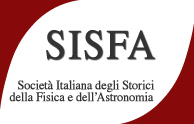Speaker
Description
Standardization has been recognized by historians as a major undertaking of international scientific organizations during the interwar period. Despite the undeniable relevance of this endeavor, the discussions driving these standardization activities have received limited attention. In my talk, I aim to explore these discussions by focusing on the International Union of Pure and Applied Physics (IUPAP), the foremost organization of physicists active in the international arena between the World Wars. Specifically, I will examine the debates surrounding electrical units within IUPAP’s Working Commission on Symbols, Units, and Nomenclature (SUN), established in 1931. This commission navigated a complex landscape of political, economic, and scientific tensions. Achieving international agreement on electrical units was challenging due to scientific debates among physicists and the involvement of engineers and politicians with industrial interests. Using archival documents from national and international physical institutions participating in these activities, I will shed light on the key players (scientists, organizations, countries), the interests involved, the instruments used, and the goals achieved in the process of standardizing international electrical units during the interwar period.

